History of Nikopol
Early History of Nikopol
During archaeological research conducted on the territory of present Nikopol in the period from 1929 to 2000, remnants of settlements and burials belonging to the Neolithic era (the 4th millennium BC), the Bronze Age (the 3rd-1st millennium BC), the Scythian (the 5th-7th centuries BC) and the Sarmatian (the 2nd century BC) cultures were found.
For a long time, up to the 13th century, various nomadic peoples - Goths, Huns, Avars, Bulgars, Khazars, Ugrians, Pechenegs, Polovtsy, Nogays - controlled these territories. In the second half of the 1st millennium AD, the famous way from the Varangians to the Greeks passed through these places, connecting the countries of Northern Europe and Kievan Rus with the Byzantine Empire.
In the 13th century, during the gradual unification of all the Western Russian lands by the Lithuanian princes into a single state - the Grand Duchy of Lithuania, the territory of present Nikopol turned out to be on the very edge of European civilization. Because of the close proximity to the Crimea, this region constantly suffered from the raids of the Crimean Tatars. In the 15th-17th centuries, people from the inner regions of the Polish-Lithuanian Commonwealth began to settle here.
The first mention of Nikopol dates back to 1594, according to the diary of an Austrian diplomat, military leader, and traveler Erich Lassota von Steblau. The need for protection against the raids of the Crimean Tatars led to the construction of a number of Cossack border fortresses called “sich”. One of them, located on the territory of the present city, was named Nikitinskaya Sich and was founded in 1639.
More Historical Facts…
December 11, 1647, Bohdan Khmelnytsky arrived here with his son Timofey. April 19, 1648, at the General Cossack Council, he was elected as the Hetman of Zaporizhian Host. Today, on the site of this historic meeting on Mykytynska Street, you can see a monument.
The settlement of Nikitinskaya Sich didn’t last long. In 1667, according to the official Polish-Russian treaty, the word “sich” was replaced with “perevoz” (ferry). So the settlement of Nikitin Perevoz was formed.
Nikopol in the Russian Empire
In 1734, Nikitin Perevoz became a village. The basis for determining the beginning of the history of present Nikopol is an official document entitled “The plan for the newly designed fortification of Nikopol, which was formerly called Nikitin Perevoz, for maintaining the military garrison of one battalion” dated March 30, 1780.
At the turn of the 18th-19th centuries, Nikopol gradually became an important trading center on the Dnieper River. The favorable geographical position at the intersection of water and land routes contributed to its economic development. In 1800, according to church books, there were 2,567 people in Nikopol: 1,326 men and 1,241 women. This is without people of other religions, who also lived in Nikopol at that time.
During the Crimean War of 1853-1856, Nikopol and the Nikitinskaya Ferry was an important transportation center of troops and sanitary units. In 1864, the population of Nikopol was 7,046 people. There were 1,229 residential houses (1,220 wooden and 9 stone), 6 shops (4 private and 2 public), 3 candle factories, 2 brick factories, 2 breweries, and a pier.
The pace of industrial development of the town significantly increased by the end of the 19th century with the start of mining of manganese ores found nearby. Well-developed river transport also contributed to the development of local industry and commerce. Every year, the Dnieper transported more than 5 million tons of cargo - mainly bread and manganese ore. Coal, timber, construction materials, groceries passed through the river port.
In 1883, the plant of agricultural machinery and equipment began production (present Nikopol Mechanical Plant), and in 1895 - the cast iron-copper foundry (in Soviet times, it was called Bolshevik, today - Nikopol Pipe Fittings). According to the census of 1897, the population of Nikopol was 17,097 people (8,276 men and 8,821 women), of whom 13,232 were of the Orthodox faith, 3,284 - of the Jewish faith.
Nikopol in the 20th-21st centuries
On the eve of the First World War, the population of Nikopol increased to 26 thousand people. During the years of the war and the subsequent Civil War in the former Russian Empire, the population of the town was greatly reduced. In 1923, it numbered less than 9,000 people.
August 8, 1931, it was decided to build a large pipe plant in Nikopol. April 18, 1935, the pipe rolling mill of the shop of small units was commissioned. This date is the official day of the foundation of the Nikopol South Pipe Plant, which soon became the largest industrial enterprise in Europe. The construction of this giant plant had a huge impact on the whole social and cultural development of Nikopol. January 1, 1941, about 70,000 people lived in the city.
August 17, 1941, during the Second World War, the Germans captured Nikopol. The occupation lasted two and a half years. February 8, 1944, the city was liberated. About 1,500 Soviet soldiers who gave their lives for the liberation of Nikopol were buried in the mass graves. On the day of the 30th anniversary of the victory, May 9, 1975, a memorial complex was opened - a 19-meter obelisk at the foot of which the Eternal Flame burns. Over 8,000 residents of Nikopol served in the ranks of the Red Army on all fronts of the war, half of them were killed.
In September 1947, the second pipe-rolling shop of the Nikopol South Pipe Plant was commissioned. By that time, most of the city’s enterprises reached the pre-war level of production. By 1957, the plant produced 2.5 thousand types of pipes from 110 steel grades, the level of its pre-war production increased 5 times.
An important role in the further development of Nikopol was played by the Kakhovskoe reservoir created here in 1956. In 1962, construction of a new industrial giant began in Nikopol - a ferroalloy plant remaining the largest ferroalloy enterprise in Europe and the former USSR, one of the largest industrial enterprises in present Ukraine. Construction and commissioning of the Nikopol Ferroalloy Plant contributed to a rapid increase in its population.
By 1970, about 125 thousand people lived in the city. Over one decade, the population of Nikopol increased by more than 60%. In 1991, on the eve of the collapse of the USSR, the population reached its peak - 161 thousand people.
In the period from 1992 to 1998, the population of Nikopol decreased by 15 thousand people. By the end of the 1990s, Nikopol was among the top ten cities of Ukraine in terms of depopulation. In the 2000s, the economic situation stabilized. Today, Nikopol, which celebrated its 380th anniversary in 2019, is one of the largest industrial centers of the Dnipropetrovsk region and Ukraine.
Nikopol streets
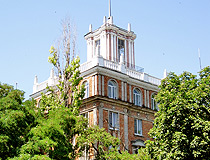
Nikopol architecture
Author: Igor Moisejev
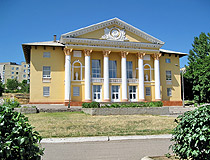
Nikopol Palace of Culture
Author: Igor Moisejev
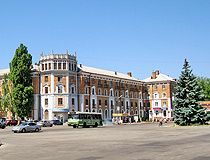
On the central square of Nikopol
Author: Igor Moisejev
Nikopol - Features
According to one of the versions, Nikopol (originally Nikitinskaya Sich) got its name from the name of Nikita, which in Greek means “winner”. The original name of the settlement was converted to Nikopol in 1780. It is literally translated from Greek as “the city of victory”. The City Day of Nikopol is celebrated on September 28.
The climate in Nikopol is temperate continental, with arid summers and winters with little snow. The average temperature in January is minus 4.1 degrees Celsius, in July - plus 22.0 degrees Celsius. The Kakhovka Reservoir significantly affects the climate of Nikopol creating an additional thermal effect. The average water temperature in the reservoir in summer is about plus 22 degrees Celsius.
Metallurgy and metal processing are the basis of the city’s industry (about 90% of all industrial production). The Nikopol Ferroalloy Plant, the largest manganese alloys plant in Europe (about 11.5% of world production), is located 3 kilometers north of the city. In the western part of Nikopol, there is a number of pipe manufacturing enterprises (the former Nikopol South Pipe Plant), one of the largest manufacturers of pipe products in Eastern Europe.
In 2018, in the village of Starozavodske located near Nikopol, construction of a 246 MW solar power plant began - the most powerful solar power plant in Ukraine and one of the largest in Europe. In February 2019, this power plant was commissioned.
Nikopol is the only place in Ukraine that originates from the unique center of the Ukrainian state, which was the Nikitinsky Zaporizhian Sich (1639-1652). In the history of the Ukrainian people, this period is known as the Ukrainian Cossack state - Zaporizhian Host (1648-1775 ) and this settlement was its first hetman capital.
The current coat of arms of Nikopol was approved in 2000. The figure of the Cossack horseman is a historical image of Zaporizhian Host. The waves mean the waters of the Dnieper River. The anchor points to the traditional occupation of locals (navigation and fishing). Seven stars mean seven main locations of Zaporizhian Sich. The central star is golden and means the Nikitinsky Zaporizhian Sich, from where the Ukrainian national state was revived in the middle of the 17th century in the form of the Ukrainian Cossack state.
June 21, 1971, a unique event occurred in the history of Ukrainian and world archeology. About 20 km north-west of Nikopol, during the excavation of the Scythian mound of Tolstaya Mogila, the Golden Pectoral was found - the chest decoration of the Scythian king, a unique work of art (the diameter - 30.6 cm, the weight - 1.15 kg). One of the greatest finds of archeology, it is kept in the Museum of Historical Treasures of Ukraine in Kyiv.
About 7 km west of Nikopol, between the villages of Oleksiivka and Kapulivka, there is the tomb of Ivan Sirko, a legendary Cossack hetman. In 1676, he signed the famous letter of the Cossacks to the Turkish Sultan Mehmed IV. This scene is depicted on the famous painting of Ilya Repin “Reply of the Zaporozhian Cossacks to Sultan Mehmed IV of the Ottoman Empire”.
There are few architectural monuments in Nikopol.
Main Attractions of Nikopol
Church of the Nativity of the Virgin (1812-1820) - the oldest church in Nikopol, one of the few that has been preserved since pre-revolutionary times. This church, built in the style of classicism, is located on the western outskirts of the city. Inside you can see wall paintings of the 19th century. Rizdviana Street, 76.
Transfiguration Cathedral (1898). This church was built for brick factory workers. Closed in 1937, it was turned into a planetarium in 1960. The last owner of the building was a local radio station. Decor and wall paintings were completely destroyed, and antennas were installed instead of crosses. Today, the cathedral is returned to believers and restored. Preobrazhenska Street, 113.
Nikopol Museum of Local Lore. This museum was established in 1919, based on a collection of works of art requisitioned from the local landowner Nechaev. The most valuable part of the exhibition was lost during the Second World War. The museum has about 36 thousand exhibits tellIng about the nature and history of the region from ancient times to today. Elektrometalurhiv Street, 46A.


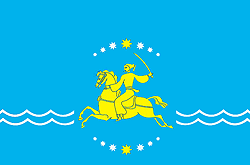
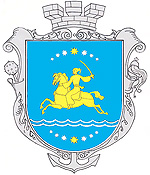



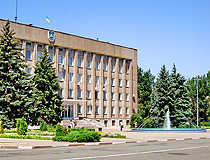
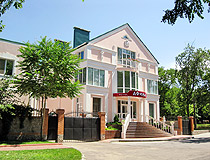
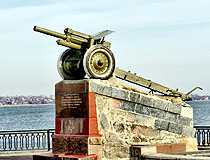
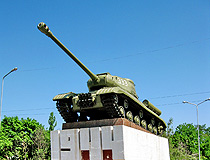
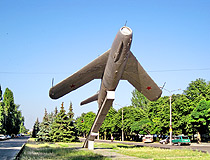
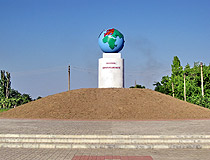
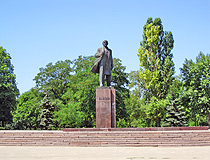
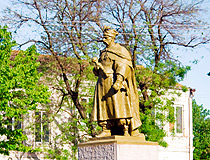
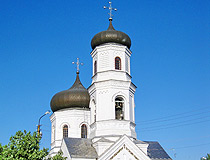
The comments of our visitors